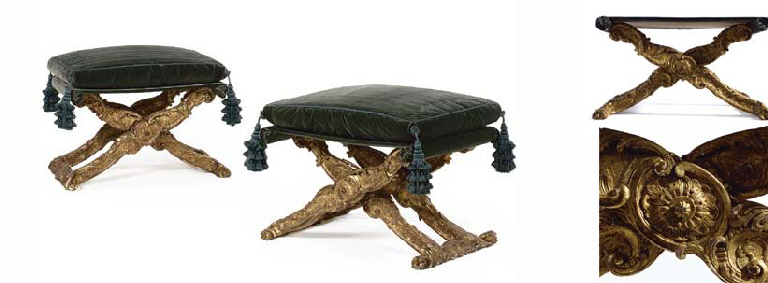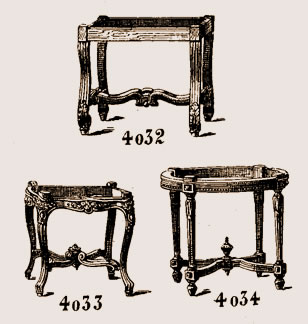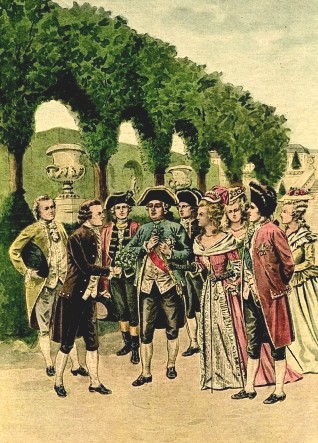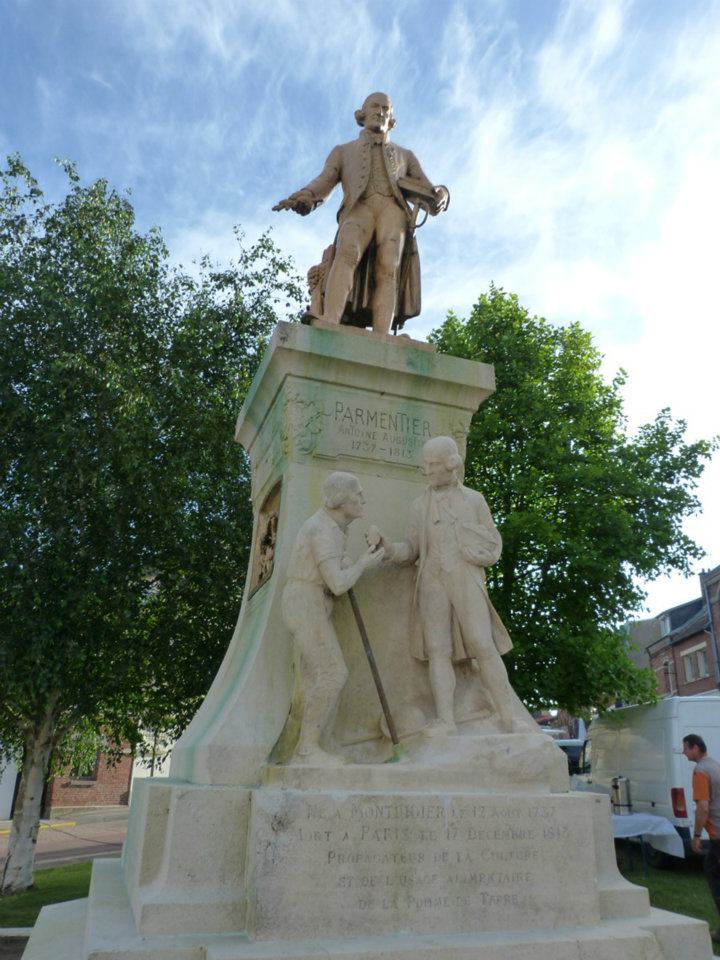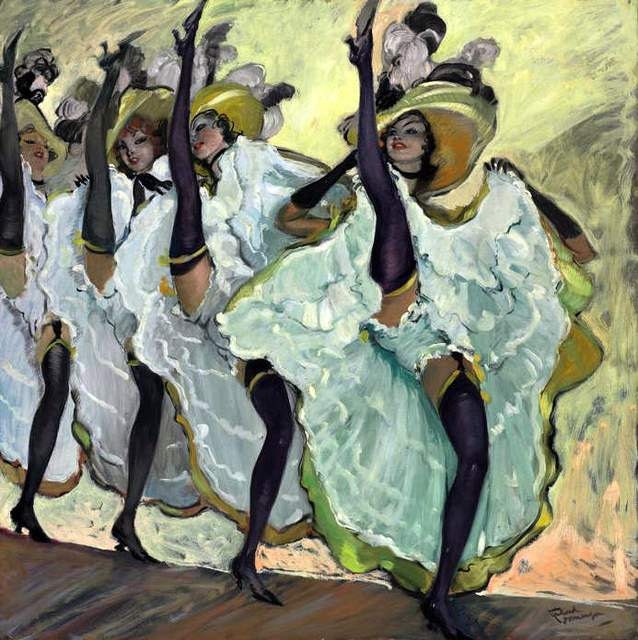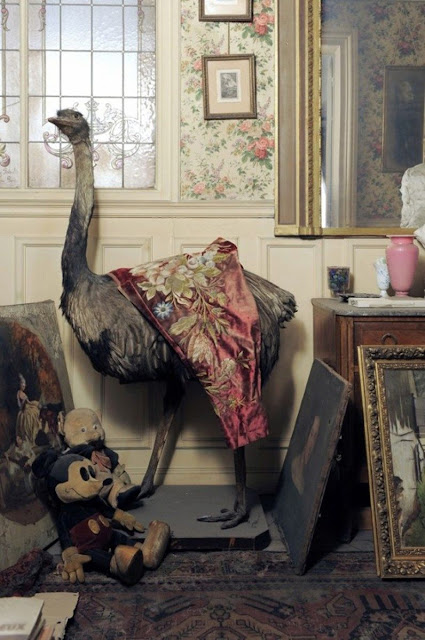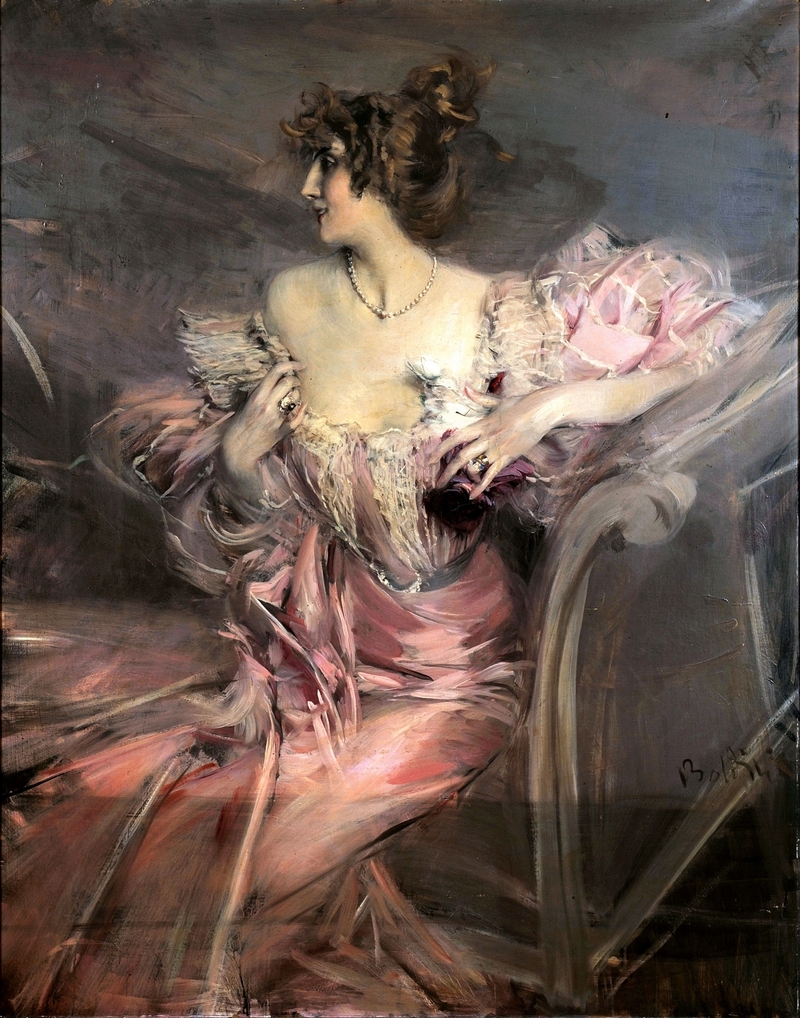
Lolo's Potage Parmentier
(Potato Leek Soup)
 |
| Soup's On! Lolo's Potage Parmentier (Potato Leek Soup) |
Soup's on! January is National Soup Month, and there are few soups as comforting as the old French standby, Potage Parmentier. Naturally creamy, with a wonderful leek flavor, it's a hearty, comfort food that’s perfect for chilly winter evenings by the fire. Lolo grew up eating Potage Parmentier and likes it even better warmed up the next day with crusty French bread...the way his mom served it. It freezes well, so you can make a big batch and enjoy it later. This versatile soup tastes so good, it's hard to believe it's really just vegetables, water (or chicken stock), butter and salt simmered together. Add watercress and you have Potage au Cresson, or chill it, lace it with cream and you have Vichyssoise. Hot or cold, most French soups are simple to make and can be made ready hours before serving time. The perfect family meal or a nice surprise to share with a friend, Potage Parmentier is on at our house!
Lolo shared an interesting story with me about Potage Parmentier and how the classic French soup derived its name. When France sent its army out against Frederick the Great’s in the
Seven Years' War, a 19-year-old pharmacist named Antoine-Augustin Parmentier signed up. He ended up locked in a Prussian prison, and served by some accounts, a total of five stints in the cooler. Parmentier was forced to eat nothing but potatoes while being held prisoner. For most of us that wouldn't be such a bad punishment, but for a Frenchman like Parmentier, it was "quelle horreur!"
 |
| Portrait of Antoine-Augustin Parmentier Painted by François Dumont, 1812 |
At that time potatoes, which were discovered in Peru in 1532 by the conquistadores, were known to the French only as hog feed. The potato had been introduced to Europe as early as 1640, but (outside of Ireland) was usually used for animal feed. The cultivation of the potato for human consumption was banned by the French Parliament because the French feared it was poisonous and contributed to leprosy. Parmentier chose to eat the potatoes rather than starve. Far from being sick of potatoes by the time of his release in 1763, he acknowledged the fact that he was in very good health. Was this a sign that potatoes did have nutritive virtues?
For Parmentier, it was. Years later his prison experience came to mind when he was conducting research on nutrition. He suggested potatoes might be good for patients with dysentery. In 1772, the French medical establishment declared potatoes edible. Resistance continued from the religious community, however. They still believed potatoes to be inedible and kept Parmentier from cultivating them in his test gardens or feeding them to patients at the Invalides Hospital where he worked.
Parmentier then began a series of publicity stunts. He began hosting lavish dinners where he served various potato dishes to dignitaries, like Benjamin Franklin, and royalty. He was able to persuade Louis XVI to encourage potato cultivation in France. The king gave Parmentier 100 acres of royal land in the plain of Sablon in Neuilly, a site formerly used as a parade ground for troops. The soil was poor, but poor soil did not cause a problem for the cultivation of potatoes. Parmentier then surrounded his personal potato patch with armed guards to suggest the potatoes were a delicacy reserved for the king's table and nobility. Nothing piques interest like forbidden fruit. When Parmentier pulled his guards off duty at night, the local peasants sacked the fields, delighted to get a taste of how the upper class lived.
All of his staging and efforts paid off. France finally embraced the potato in 1785, when a famine struck northern France and food shortages were rife in Paris. Parmentier set up potato soup kitchens throughout Paris, convincing the poor, huddled masses to eat a potato rather than starve to death. Ultimately, Louis XVI recognized his work by saying, "France will thank you some day for having found bread for the poor."
 |
| Parmentier presents the potato to Louis XVI and his family by Albert Chereau |
At Louis XVI’s birthday party in 1786, Parmentier presented the king and Marie-Antoinette a bouquet of potato flowers. Louis pinned a flower to his lapel and Marie wove a garland into her hair. If that pair made the potato fashionable, the rest would follow suit. And you can be sure they followed! The nobles and ladies in their entourage did the same as France's aristocracy sat down to a dinner heavy on potato dishes. It's said the incident became a topic of conversation throughout France as the bourgeois took to donning potato flowers to show their grasp of modern fashion.
During the siege of the first Paris Commune in 1795, the Jardin des Tuileries were even converted into potato fields to stave off famine and hunger. Potatoes were later declared to be the food of the French Revolution, available in quantity when all else was in short supply. For this, Parmentier was honored by Napoleon, who made him one of the first members of his Legion d'Honneur. Parmentier died in 1813 at the age of 76. He is celebrated in France by the many places and food dishes which are named for him.
Lolo's Potage Parmentier (Potato Leek Soup)
Prep Time: 25 minutes
Cook Time: About 1 hour
Yield: 2 quarts of soup serving 6 to 8
Ingredients:
4 leeks (whites only), thoroughly rinsed and sliced
1 medium onion, peeled and roughly chopped
5 russet potatoes, peeled and cut into large pieces (
Tip: don’t substitute another type of potato in this recipe; only russet potatoes have enough starch to get the proper consistency in the soup.)
2 tablespoons olive oil
3 tablespoons unsalted butter
Heavy pinch kosher salt, plus additional for seasoning
8 cups chicken stock
1 bay leaf
1 1/2 teaspoons finely chopped fresh thyme
1/2 teaspoon freshly ground pepper
1 cup crème fraiche or heavy cream
1/2 cup sour cream (optional)
Directions:
1.
Prepare the leeks and onion. Using a sharp knife, halve the white part of the leek lengthwise and rinse well under cold running water to rid the leek of any sand. Slice thinly crosswise and set aside. Prepare the onion as you would usually, chop into small-ish pieces – it doesn’t really matter if they’re not very small as you will purée the soup later.
2. Prepare the potatoes. Peel the potatoes and chop them.
3.
Sweat the vegetables. In a 6-quart saucepan heat the olive oil and butter over a medium heat. Add the onion and leeks and a heavy pinch of salt and sweat without browning, stirring more or less constantly for about 8 minutes. When you’re sweating the vegetables you don’t want anything to brown at all, just become tender. Cover the pot, decrease the heat to medium-low and cook until the leeks are tender, approximately 10 minutes, stirring occasionally.
4.
Simmer the soup. Add the chicken stock, potatoes, bay leaf and thyme, increase the heat to medium-high, and bring to a boil. Reduce the heat to low, cover, and gently simmer until the potatoes are soft, approximately 30 to 45 minutes. Don't let potatoes get mushy, though. Remove the bay leaf.
5. Purée the soup. Remove the soup from the heat and purée in a food processor or blender, working in batches if necessary. (Alternately, if you own an immersion blender, purée the soup directly in the pot.) Return the puréed soup to pot and stir in the crème fraiche. Let simmer until soup has thickened, about 20 minutes.
6.
Bon Appétit. Season to taste, if necessary. You can stir in some sour cream, or serve each bowl with a dollop if you’d like the soup a tad creamier. Serve immediately, or chill and serve cold.
Note: When blending hot liquids, remove liquid from the heat and allow to cool for at least 15 minutes. Transfer liquid to a blender or food processor and fill it no more than halfway. If using a blender, release one corner of the lid; that prevents the vacuum effect that creates heat explosions. Place a towel over the top of the machine, pulse a few times, then process on high speed until smooth.
 |
| Soup's On! |
Lolo started cooking at the age of 15 at the Café Français in Nantes, France. Lolo eyeballs measurements and relies more on common sense, instinct and tasting than on direction following.
Bon Appétit
Lolo and Mimi



